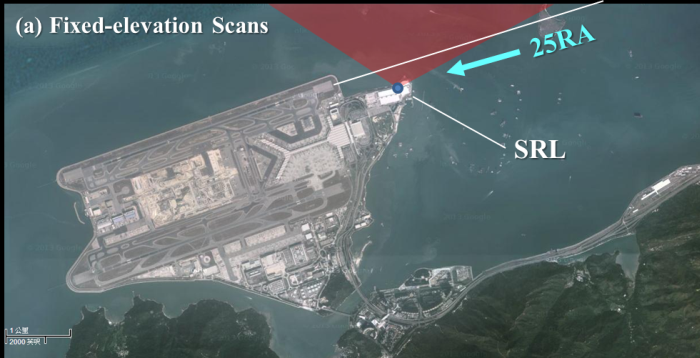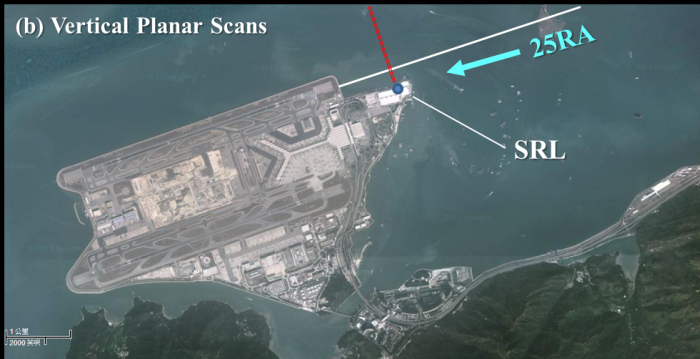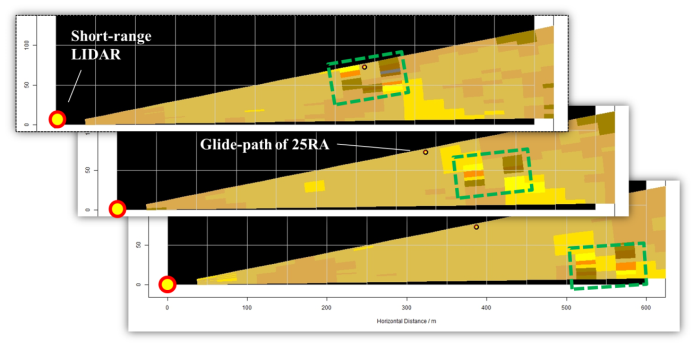First wake vortex measurements at the Hong Kong International Airport
|
The Observatory has always been keen in applying the latest technology in advancing aviation meteorological service. Over the past few summers, a rented unit of short-range LIDAR (SRL) – a higher-resolution, more agile counterpart to the long-range LIDARs currently used in the alerting of low-level windshear – has been installed on the rooftop of the AsiaWorld-Expo to study the properties of building-induced windshear and turbulence at corridor 25RA. This was achieved by performing rapid near-horizontal planar scans, up to 3 times per minute, over the region spanned by the last 1 to 2 nautical miles before touch-down (Fig. 1a). |
|
|
|
|
|
Figure 1 Schematic diagram of (a) near-horizontal planar scans and (b) vertical planar scans over corridor 25RA using the short-range LIDAR installed on top of the AsiaWorld-Expo. |
|
|
|
Figure 2 Sample sequence of wake vortex evolution as measured by the short-range LIDAR along a cross-section of corridor 25RA. Images are separated by intervals of 10 seconds. The wake vortex pair is represented by the quartet of colour pixels carrying wind speeds in the opposite sense. |


